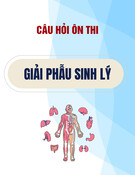
Journal of Science and Technology in Medicine and Pharmacy | Vol 2, No 5 - 2023 |
5
Editor-in-Chief:
Dr. Nguyen Phuong Sinh
Received:
13/7/2023
Accepted:
20/8/2023
Published:
31/12/2023
Copyright: @ 2023
Belongs to the Journal of
Science and Technology in
Medicine and Pharmacy
Competing interests: The
authors have no competing
interests to declare.
Contact address: No. 284,
Luong Ngoc Quyen str., Thai
Nguyen city, Thai Nguyen
Province
Email:
tapchi@tnmc.edu.vn
THE PROCEDURE OF MAKING FIBRIN GLUE BY
FROZEN PLASMA METHOD ON EXPERIMENT
Hoang Thu Soan*, Vu Tien Thang, Vu Thi Kim Lien, Vu Thi
Thu Hang, Dinh Thi Thu Huong
Thai Nguyen University of Medicine and Pharmacy
* Author contact: soanyk@gmail.com
ABSTRACT
Background: Currently, fibrin sealant (glue) is used in virtually
every surgical specialty. The concentrated fibrinogen is produced
by different methods as well as multiple sources of plasma.
Objectives: Identified the process for making fibrin sealant (glue)
using plasma frozen methods. Methods: Using rabbit's plasma to
determine the optimal temperature and time to not only produce
the highest fibrinogen concentration, but also achieve thrombin at
the same time. Results: The average fibrinogen concentration
yielding was similar at the time of freezing within 12h, 24h, and
48 hours. All were greater than fibrinogen concentration yielding
of freezing within 2 hours. The average fibrinogen concentration
yielding at temperatures of -18°C and -35°C was similar at the
time of freezing of 12h, 24h, and 48 hours. However, this was
lower at the time of freezing of 2h. The percentage of fibrinogen
yielding when freezing within 12 to 48 hours at a temperature of -
18°C is from 33.97 to 55.13%. The percentage of fibrinogen
obtained when freezing within 12 to 48 hours at a temperature of
-35°C is from 31.10 to 57.46%. Conclusions: Plasma was frozen
at -18°C within 12 - 48 hours. Defrost and decant a portion of the
plasma to collect fibrinogen. Creating thrombin by adding
calcium chloride to the plasma. Mix fibrinogen with thrombin in
a ratio of 1:1 to create fibrin glue.
Keywords: Fibrinogen; Fibrin glue; Thrombin
INTRODUCTION
Currently, fibrin glue is known and used more and more in
virtually every surgical with the purpose of tissue adhesion,
hemostasis, and wound healing. The main components of fibrin
glue are fibrinogen and thrombin. Companies have extracted
components of glue from multiple sources of plasma such as






















